Influence of Cooling Water Flow Rate on Start and Heat Transfer Performance of Pulsating Heat Pipe at Different Inclination Angles
Abstract
1. Introduction
2. Methodology
2.1. Experimental System
2.2. Data Processing
3. Results and Discussion
3.1. Start-Up Performance at Inclination Angle of 90° and Different Flow Rates
3.2. Heat Transfer Performance at Inclination Angle of 90° and Different Flow Rates
3.3. Heat Transfer Performance at Inclination Angle of 30° and 60° and Different Flow Rates
4. Conclusions
Author Contributions
Funding
Institutional Review Board Statement
Informed Consent Statement
Data Availability Statement
Conflicts of Interest
Nomenclature
| c | specific heat capacity (J/kg·°C) |
| i | number of thermocouples |
| U | uncertainty |
| ṁ | the mass flow rate of cooling water (kg/s) |
| Q | quantity of heat transfer (W) |
| R | thermal resistance (°C/W) |
| Δt | temperature drop: evaporator–condenser (°C) |
| t | temperature (°C) |
| abbreviation | |
| PHP | pulsating heat pipe |
| subscript | |
| cond | condenser |
| evap | evaporator |
| cooling | cooling water |
| p | isobaric |
| superscript | |
| ′ | inlet |
| ″ | outlet |
References
- Akachi, H. Structure of a Heat Pipe. U.S. Patent US4921041, 1 May 1990. [Google Scholar]
- Zhang, Y.; Faghri, A. Advances and unsolved issues in pulsating heat pipes. Heat Transf. Eng. 2008, 29, 20–44. [Google Scholar] [CrossRef]
- Dand, C.; Jia, L.; Lu, Q.Y. Investigation on thermal design of a rack with the pulsating heat pipe for cooling CPUs. Appl. Therm. Eng. 2017, 110, 390–398. [Google Scholar]
- Yang, H.H.; Wang, J.; Wang, N.; Fengchang, Y. Experimental study on a pulsating heat pipe heat exchanger for energy saving in air-conditioning system in summer. Energy Build. 2019, 197, 1–6. [Google Scholar] [CrossRef]
- Xu, R.J.; Zhang, X.H.; Wang, R.X.; Xu, S.H.; Wang, H.S. Experimental investigation of a solar collector integrated with a pulsating heat pipe and a compound parabolic concentrator. Energy Convers. Manag. 2017, 148, 68–77. [Google Scholar] [CrossRef]
- Rohtash, G.; Ranjan, D. Waste heat recovery from a biomass heat engine for thermoelectric power generation using two-phase thermosyphons. Renew. Energy 2019, 148, 1280–1291. [Google Scholar] [CrossRef]
- Rohtash, G.; Ranjan, D. Experimental analysis of a novel solar pond driven thermoelectric energy system. J. Energy Resour. Technol. 2020, 142, 121302. [Google Scholar]
- Khandekar, S.; Dollinger, N.; Groll, M. Understanding operational regimes of closed loop pulsating heat pipes: An experimental study. Appl. Therm. Eng. 2003, 23, 707–719. [Google Scholar] [CrossRef]
- Bhuwakietumjohn, N.; Rittidech, S. Internal flow patterns on heat transfer characteristics of a closed-loop oscillating heat-pipe with check valves using ethanol and a silver nano-ethanol mixture. Exp. Therm. Fluid Sci. 2010, 34, 1000–1007. [Google Scholar] [CrossRef]
- Charoensawan, P.; Terdtoon, P. Thermal performance of horizontal closed-loop oscillating heat pipes. Appl. Therm. Eng. 2008, 28, 460–466. [Google Scholar] [CrossRef]
- Chen, X.; Lin, Y.; Shao, S. Influences of inclination angle and heating power on heat transfer performance of ethane pulsating heat pipe. CIESC J. 2019, 70, 1383–1389. (In Chinese) [Google Scholar]
- Jia, L.; Li, Y. Experimental research on heat transfer of pulsating heat pipe. J. Therm. Sci. 2008, 17, 181–185. [Google Scholar]
- Mehrali, M.; Sadeghinezhad, E.; Azizian, R.; Akhiani, A.R.; Latibari, S.T.; Mehrali, M.; Metselaar, H.S.C. Effect of nitrogen-doped graphene nanofluid on the thermal performance of the grooved copper heat pipe. Energy Convers. Manag. 2016, 118, 459–473. [Google Scholar] [CrossRef]
- Heydarian, R.; Shafii, M.; Rezaee Shirin-Abadi, A.; Ghasempouret, R.; Alhuyi Nazari, M. Experimental investigation of paraffin nano-encapsulated phase change material on heat transfer enhancement of pulsating heat pipe. J. Therm. Anal. Calorim. 2019, 137, 1603–1613. [Google Scholar] [CrossRef]
- Bastakoti, D.; Zhang, H.N.; Cai, W.H.; Li, F.C. An experimental investigation of thermal performance of pulsating heat pipe with alcohols and surfactant solutions. Int. J. Heat Mass Transf. 2018, 117, 1032–1040. [Google Scholar] [CrossRef]
- Naik, R.; Pinto, L.; Rama Narasimha, K.; Pundarika, G. Theoretical studies on the application of pulsating heat pipe in vapour compression refrigeration system. Appl. Mech. Mater. 2014, 592–594, 1801–1806. [Google Scholar] [CrossRef]
- Xu, D.K.; Pang, J.Y.; Du, C.M.; Guan, E.Y. Experimental study on startup and operating characteristics of parallel type pulsating heat pipe under normal temperature. J. Refrig. 2018, 39, 113–118. (In Chinese) [Google Scholar]
- Ahmad, H.; Jung, S.Y. Effect of active and passive cooling on the thermo-hydrodynamic behaviors of the closed-loop pulsating heat pipes. Int. J. Heat Mass Transf. 2020, 156, 119814. [Google Scholar] [CrossRef]
- Zou, J.; Yang, H.H.; Fang, H.; Zhou, B. Study on the start-up characteristics of closed loop pulsating pipes under forced cooling. Fluid Mach. 2014, 42, 64–68. (In Chinese) [Google Scholar]
- Shi, W.X.; Pan, L.S.; Li, W.Y. Influences of inclination and cooling condition on heat transfer performance of closed loop plate pulsating heat pipe with parallel channels. CIESC J. 2014, 65, 532–537. (In Chinese) [Google Scholar]
- Zhang, Q.; Han, X.X.; Wang, Y.X.; Li, P.H. Heat transfer performance on unequal-diameter pulsating heat pipe. Chem. Eng. 2017, 45, 39–42+57. (In Chinese) [Google Scholar]
- Luo, X.X.; Zhang, X.L.; Hua, W.S. Experimental study on heat transfer performance of pulsating heat pipe heat exchanger with phase change heat storage at different inclination. Fluid Mach. 2017, 45, 62–67. (In Chinese) [Google Scholar]
- Zhao, Y.Q. Influence of Cooling Conditions on the Heat Transfer Performance of Pulsating Heat Pipe and Its Application in Solar Energy Collecting. Master’s Thesis, Beijing University of Civil Engineering and Architecture, Beijing, China, 2020. (In Chinese). [Google Scholar]
- Shi, W.X.; Chen, H.D.; Pan, L.S.; Wang, Q. Starting and running performance of a pulsating heat pipe with micro encapsulated phase change material suspension. Appl. Therm. Eng. 2022, 212, 118626. [Google Scholar] [CrossRef]
- Shi, S.Y.; Cui, X.Y.; Han, H.; Weng, J.; Li, Z. A study of the heat transfer performance of a pulsating heat pipe with ethanol-based mixtures. Appl. Therm. Eng. 2016, 102, 1219–1227. [Google Scholar] [CrossRef]
- Lv, S.H.; Duan, J.Q. Basic Physics Experiment; Higher Education Press: Beijing, China, 2006. [Google Scholar]
- Xu, J.L.; Zhang, X.M. Start-up and steady thermal oscillation of a pulsating heat pipe. Heat Mass Transfer. 2005, 41, 1685–1694. [Google Scholar] [CrossRef]
- Liu, X.D.; Chen, Y.P.; Zhang, C.B.; Shi, M.B. Experimental study on start-up performance of closed loop pulsating heat pipe. J. Astronaut. 2011, 32, 2300–2304. (In Chinese) [Google Scholar]
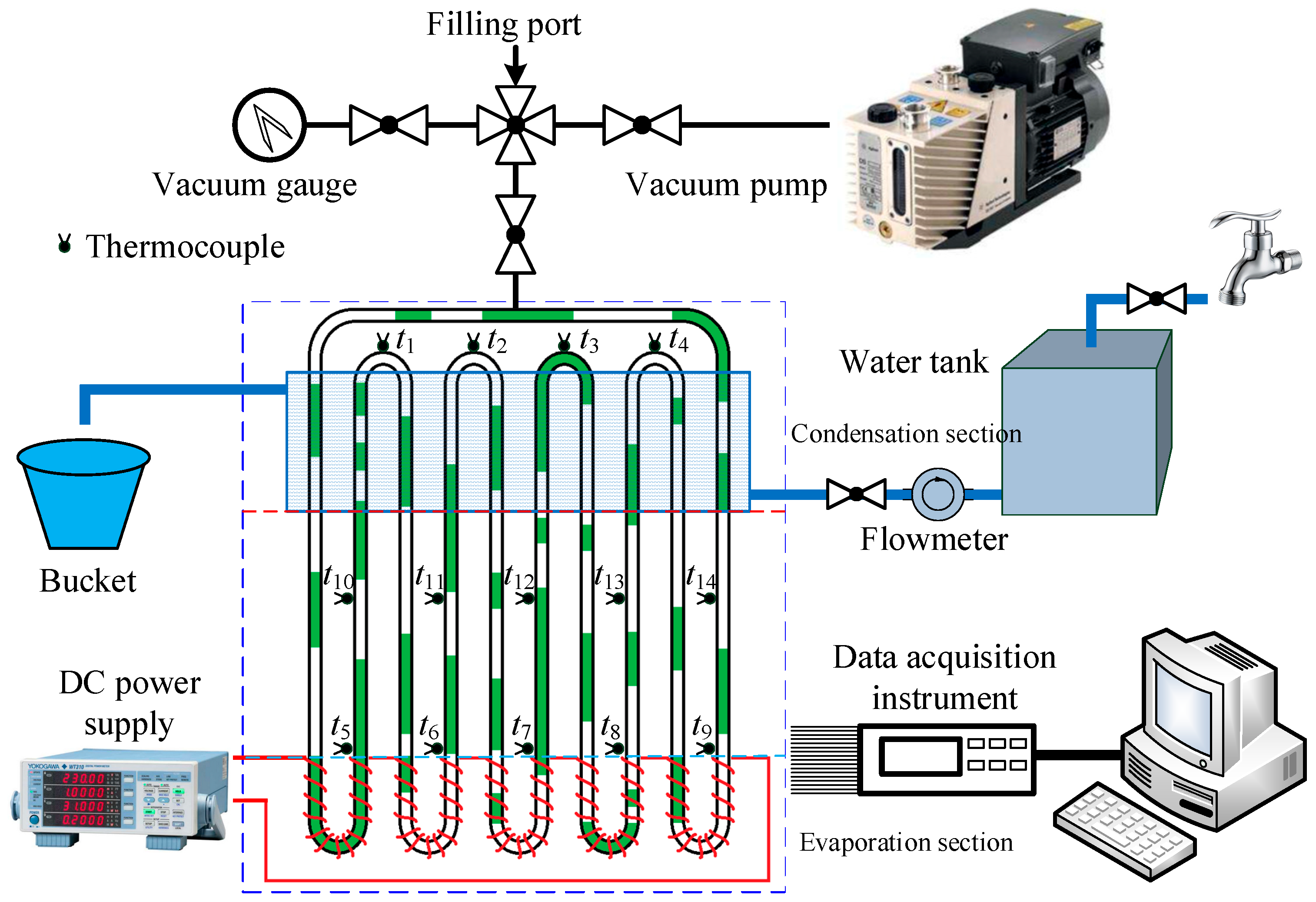
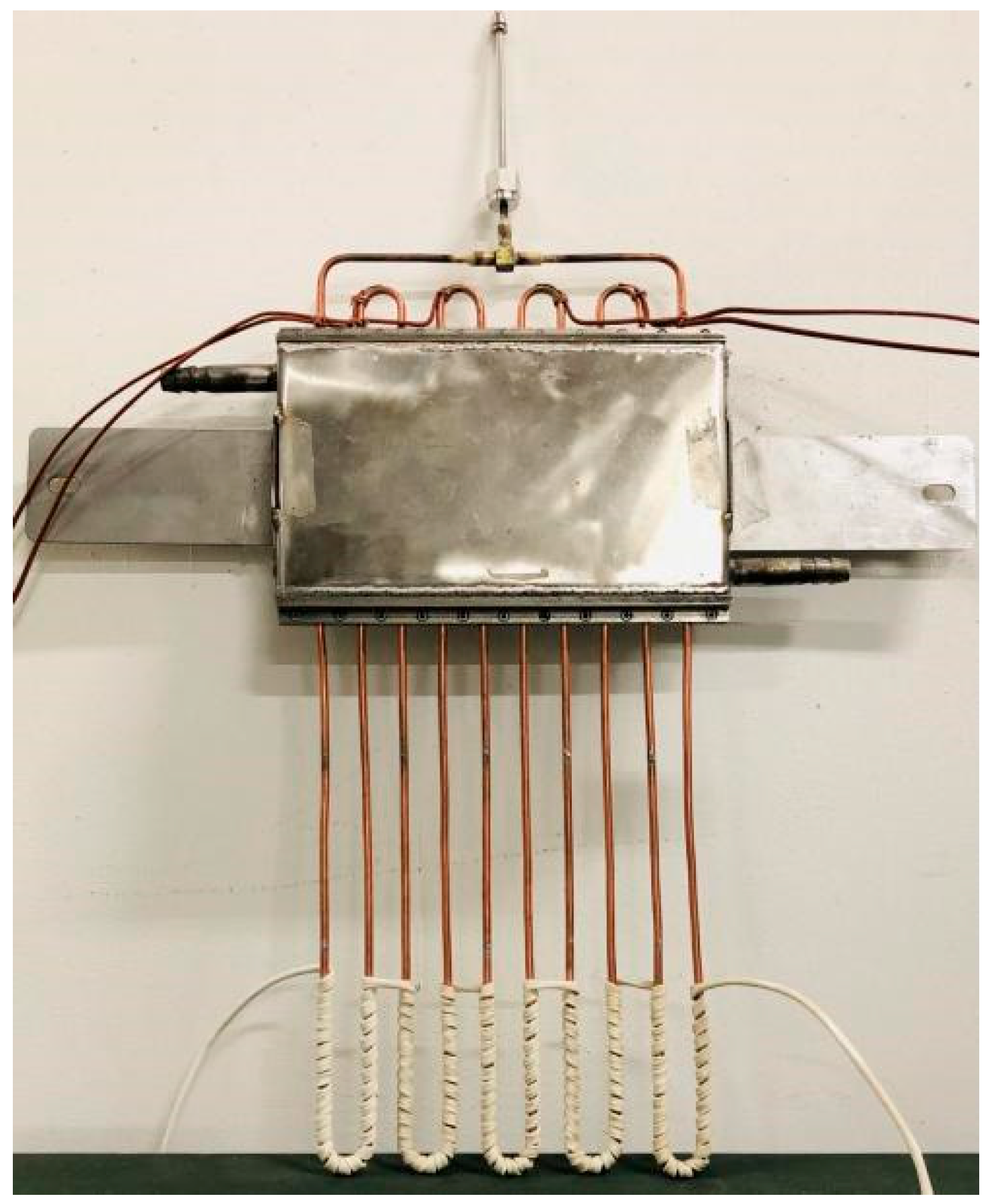


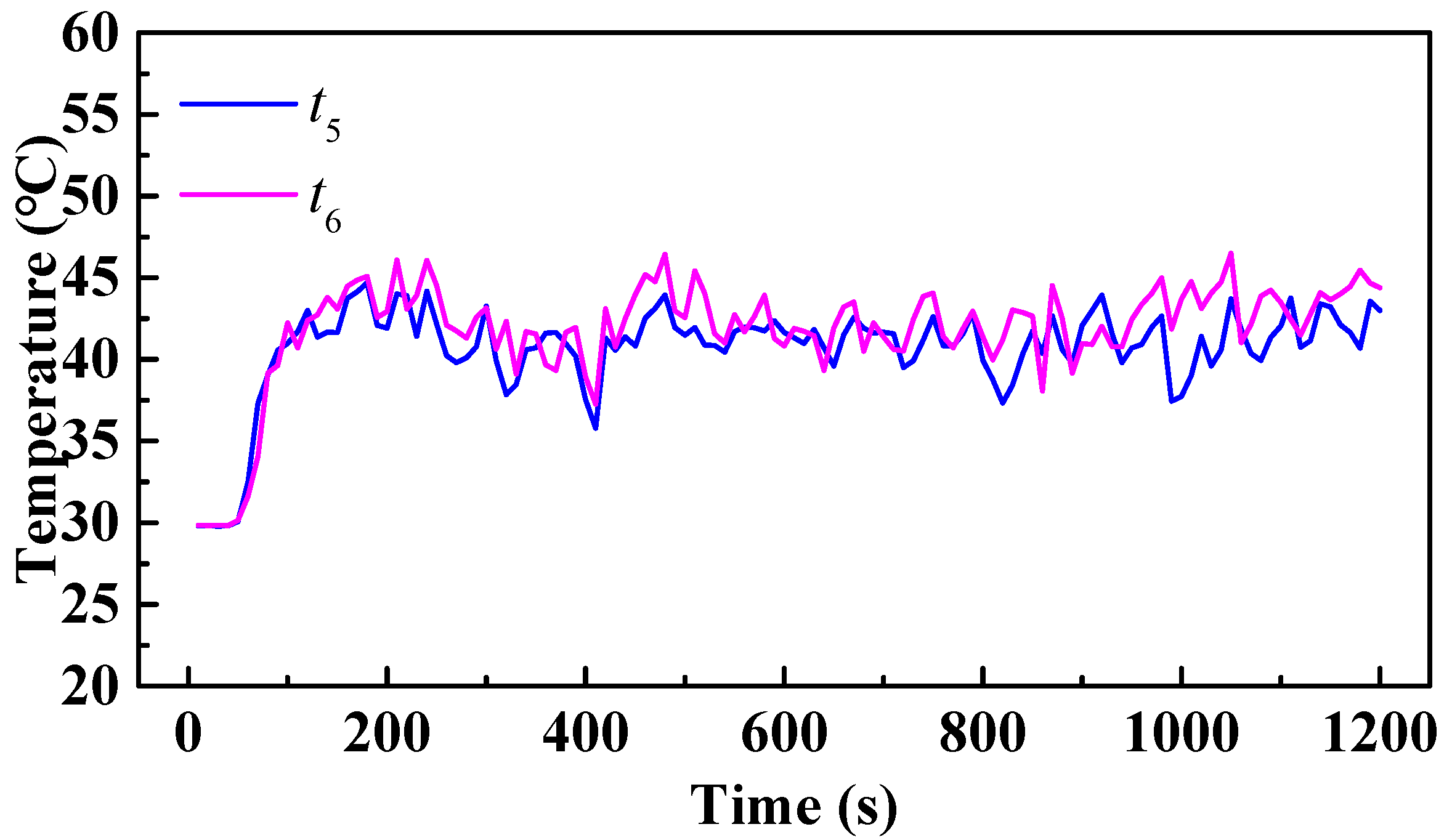

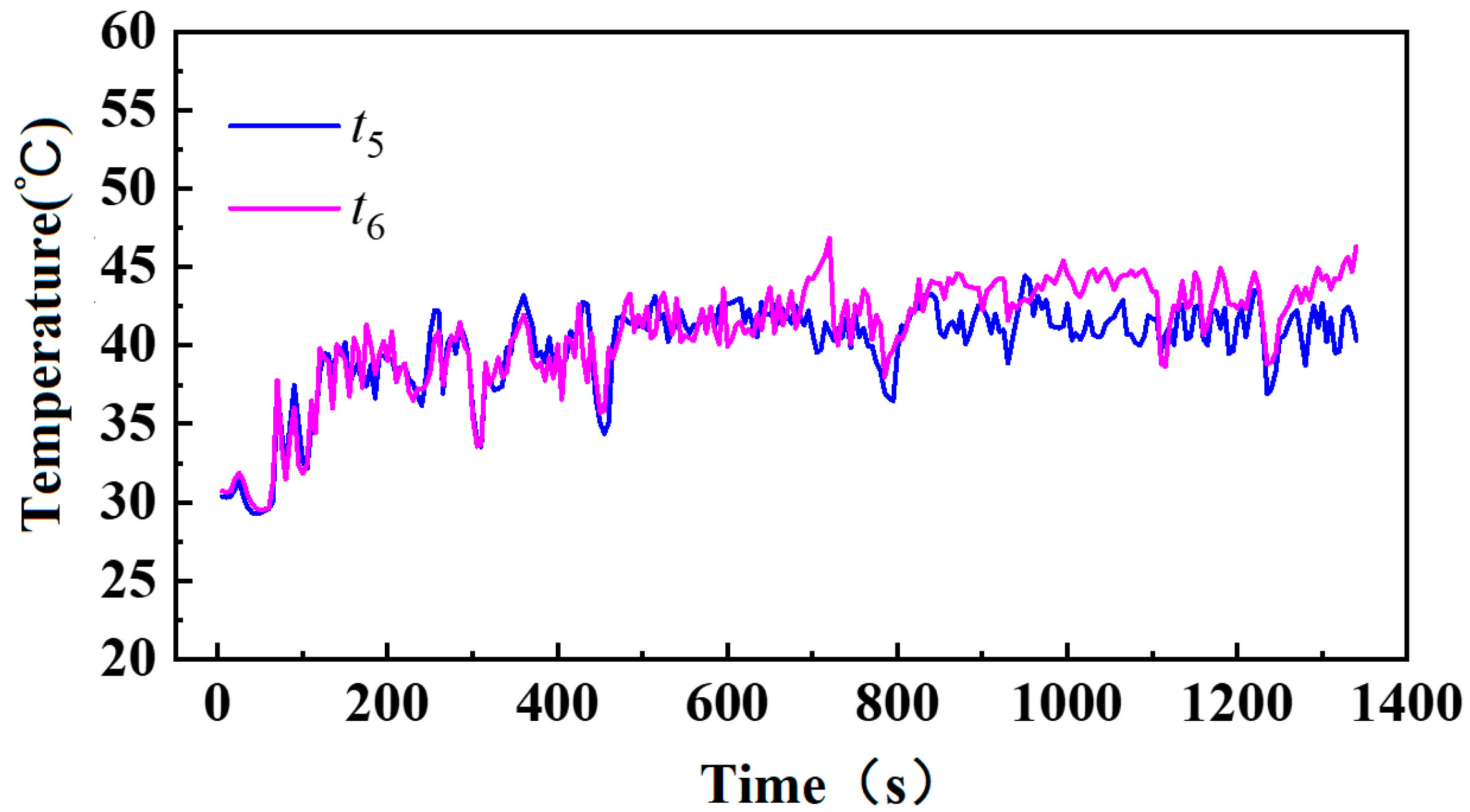
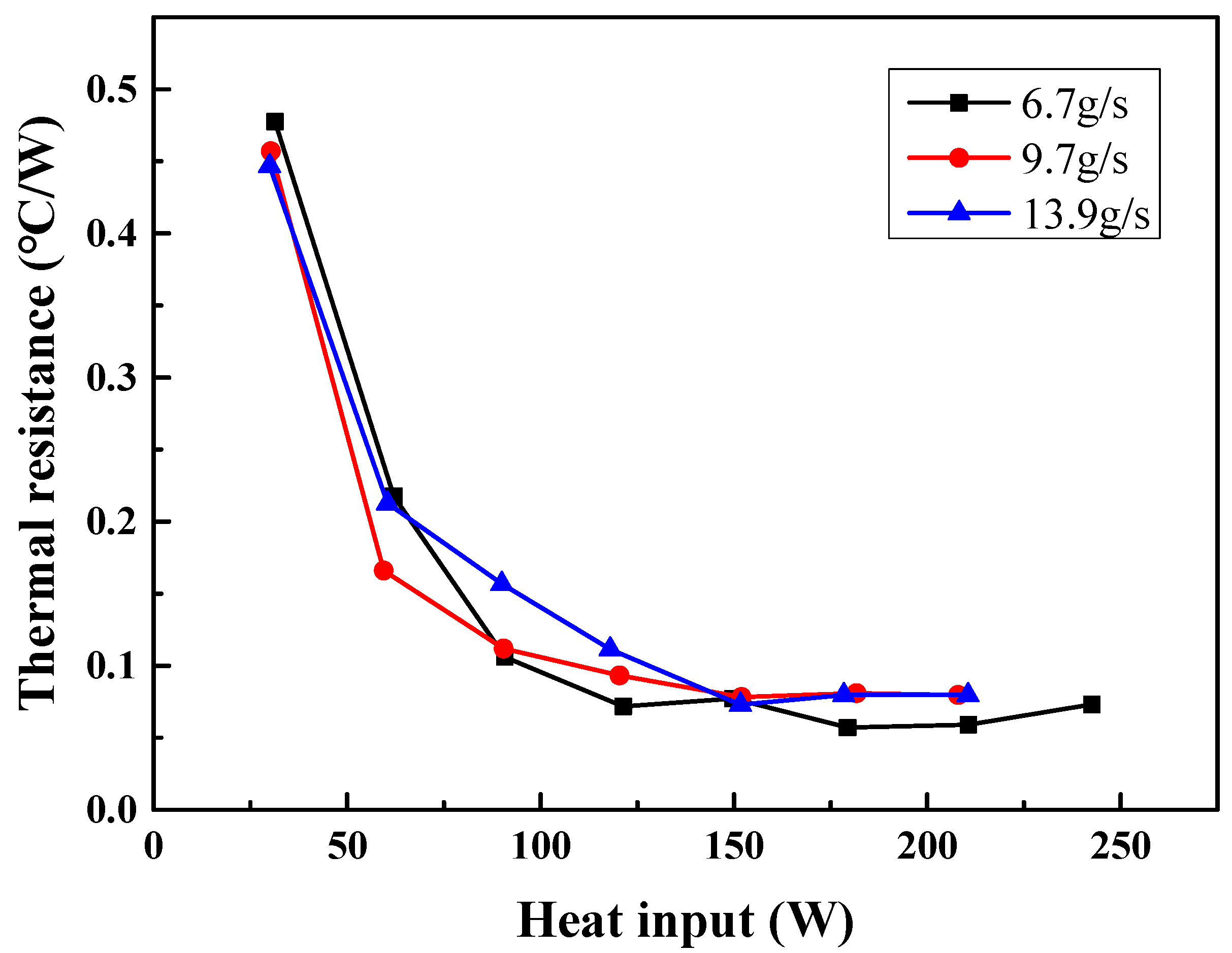



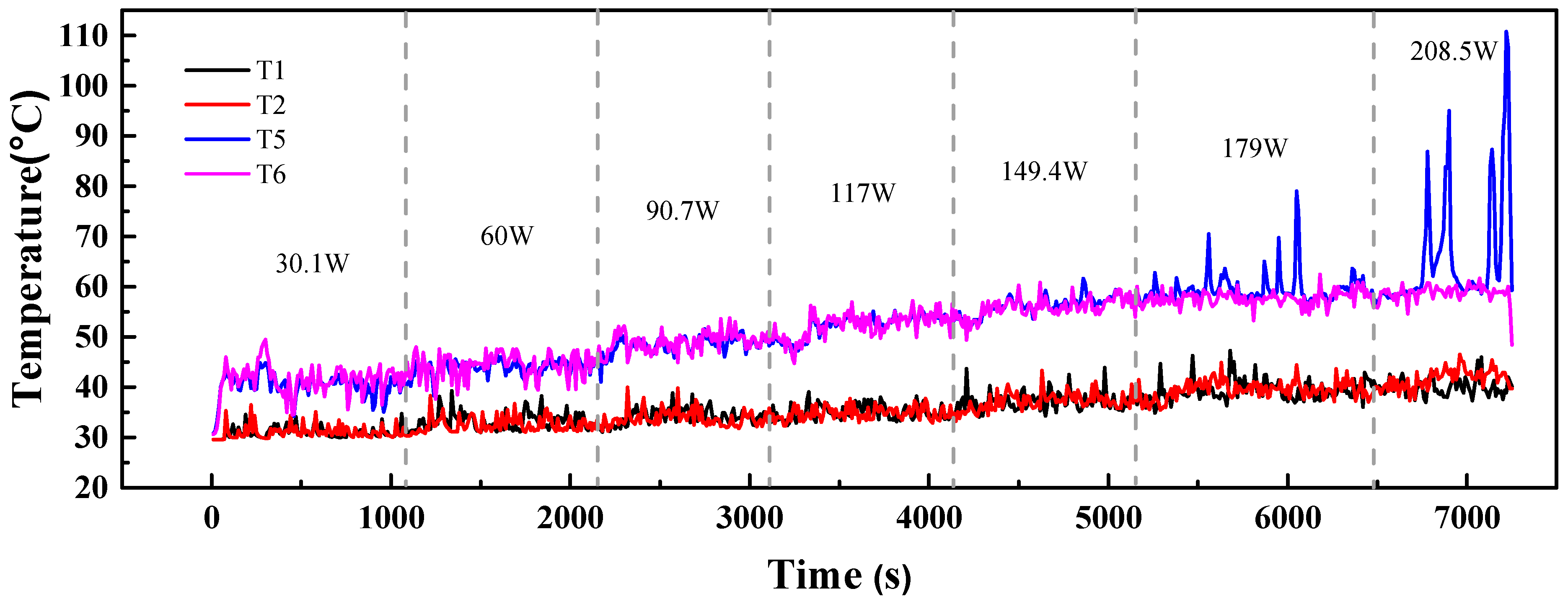
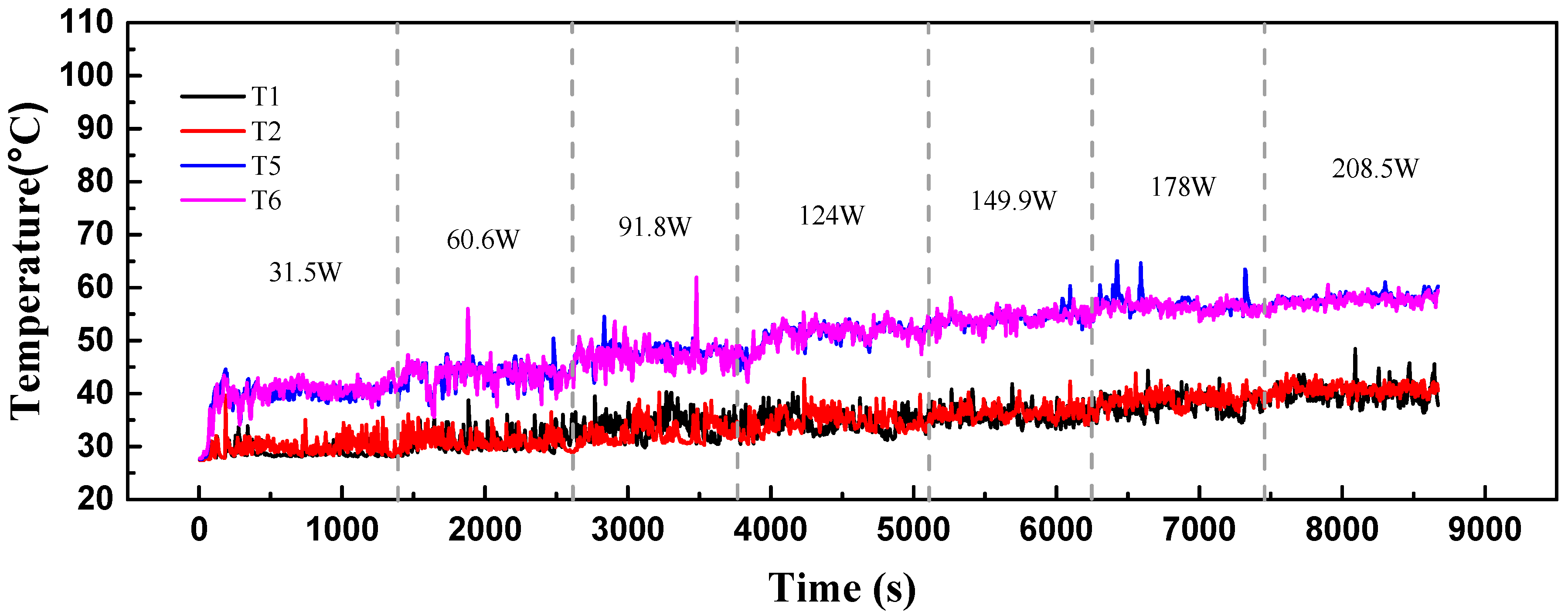


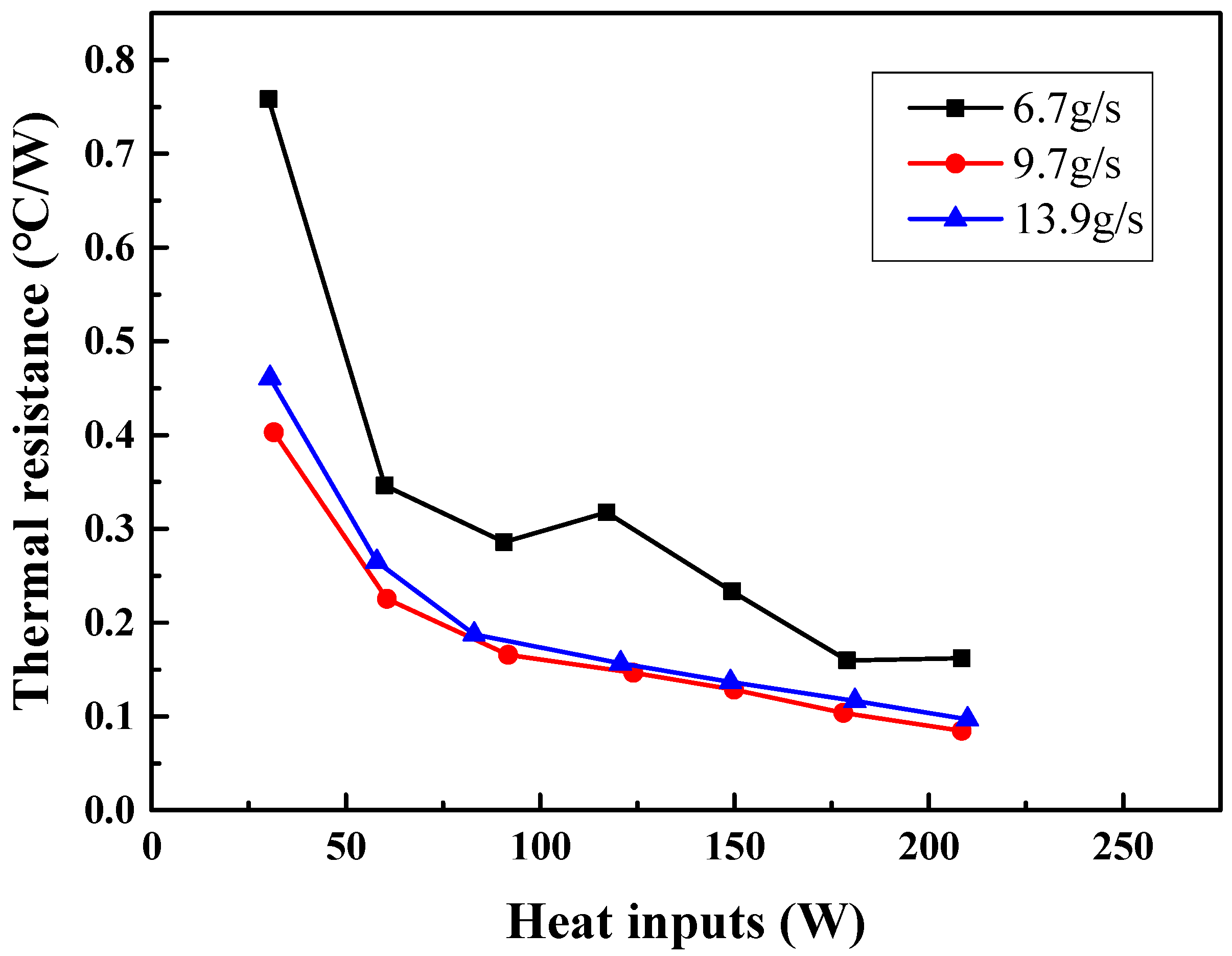

| Working Fluid | Tsat (℃) | ρl (kg/m3) | ρv (kg/m3) | Hfg (kJ/kg) | σ (N/m) |
|---|---|---|---|---|---|
| Ultrapure water | 100 | 958 | 0.6 | 2256.7 | 0.0589 |
| Working Fluid | Temperature (°C) | Specific Heat (kJ/kg·°C) | Thermal Diffusion Coefficient (mm2/s) | Dynamic Viscosity (mPa·s) |
|---|---|---|---|---|
| Ultrapure water | 30 | 4.2 | 0.15 | 0.8 |
| 70 | 4.187 | 0.16 | 0.41 |
Disclaimer/Publisher’s Note: The statements, opinions and data contained in all publications are solely those of the individual author(s) and contributor(s) and not of MDPI and/or the editor(s). MDPI and/or the editor(s) disclaim responsibility for any injury to people or property resulting from any ideas, methods, instructions or products referred to in the content. |
© 2023 by the authors. Licensee MDPI, Basel, Switzerland. This article is an open access article distributed under the terms and conditions of the Creative Commons Attribution (CC BY) license (https://creativecommons.org/licenses/by/4.0/).
Share and Cite
Shi, W.; Liu, X.; Su, X.; Chen, H.; Pan, L. Influence of Cooling Water Flow Rate on Start and Heat Transfer Performance of Pulsating Heat Pipe at Different Inclination Angles. Sustainability 2023, 15, 1921. https://doi.org/10.3390/su15031921
Shi W, Liu X, Su X, Chen H, Pan L. Influence of Cooling Water Flow Rate on Start and Heat Transfer Performance of Pulsating Heat Pipe at Different Inclination Angles. Sustainability. 2023; 15(3):1921. https://doi.org/10.3390/su15031921
Chicago/Turabian StyleShi, Weixiu, Xuebing Liu, Xiaoyang Su, Hongdi Chen, and Lisheng Pan. 2023. "Influence of Cooling Water Flow Rate on Start and Heat Transfer Performance of Pulsating Heat Pipe at Different Inclination Angles" Sustainability 15, no. 3: 1921. https://doi.org/10.3390/su15031921
APA StyleShi, W., Liu, X., Su, X., Chen, H., & Pan, L. (2023). Influence of Cooling Water Flow Rate on Start and Heat Transfer Performance of Pulsating Heat Pipe at Different Inclination Angles. Sustainability, 15(3), 1921. https://doi.org/10.3390/su15031921






